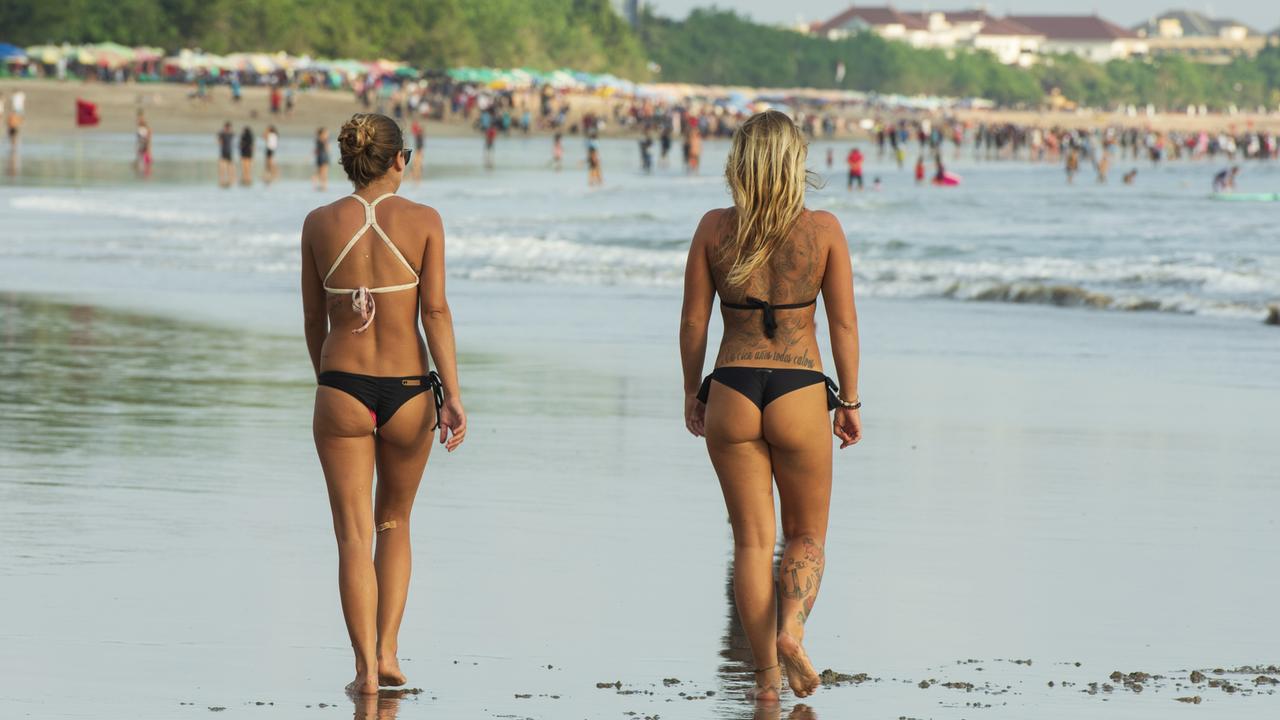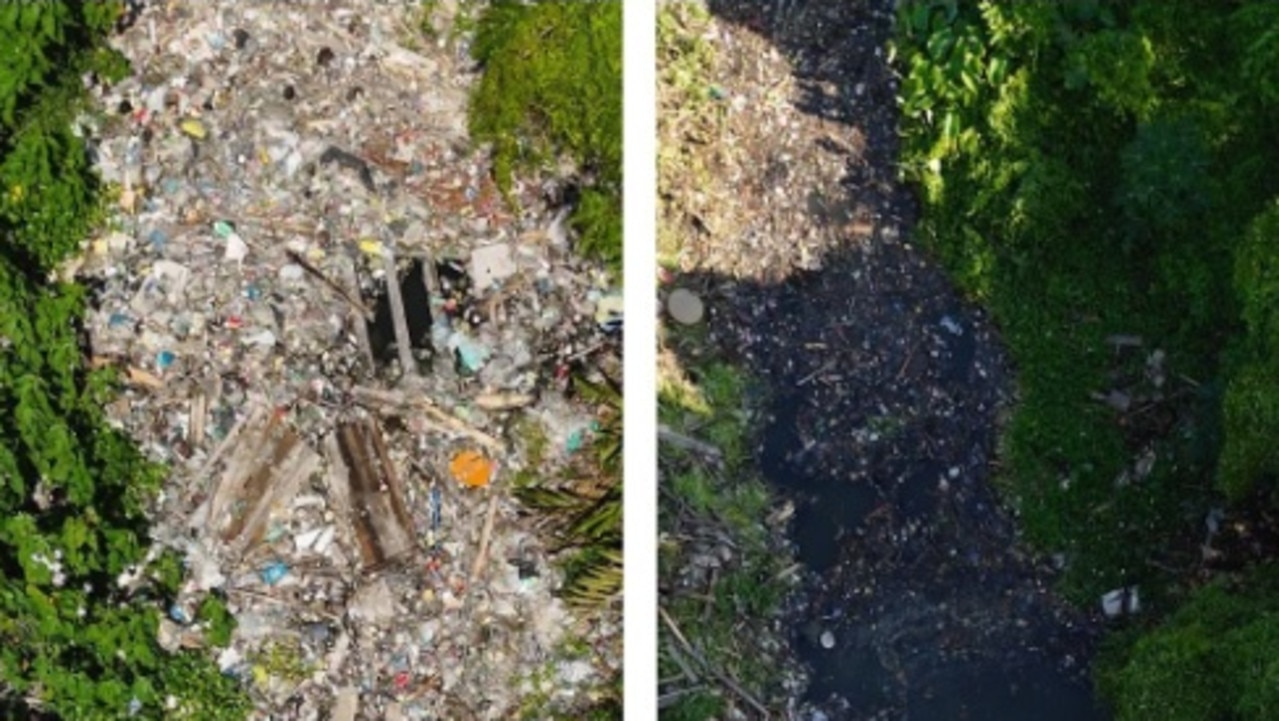Grim reality of travelling in Bali right now amid pandemic
It once brought in around one million Australians each year. But since the pandemic hit, Bali has changed in a way this tourist never expected.

I have been in Bali for nearly a month and here’s the thing: I still haven’t met an Aussie, let alone been graced by the Aussie accent usually so familiar in these parts.
I’ve met a Japanese-Belgian family, three or four Brits, a Korean, two Canadians and many Indonesians, but the absence of Australians is noticeable.
According to Angga, a Balinese guy who worked at the awesome rolled ice cream shop (it’s a thing) around the corner from my villa before it was shut down, there are very few “Aussie Aussie Aussie Oi Oi Oi’s” (as he calls them) in Kuta, in particular.
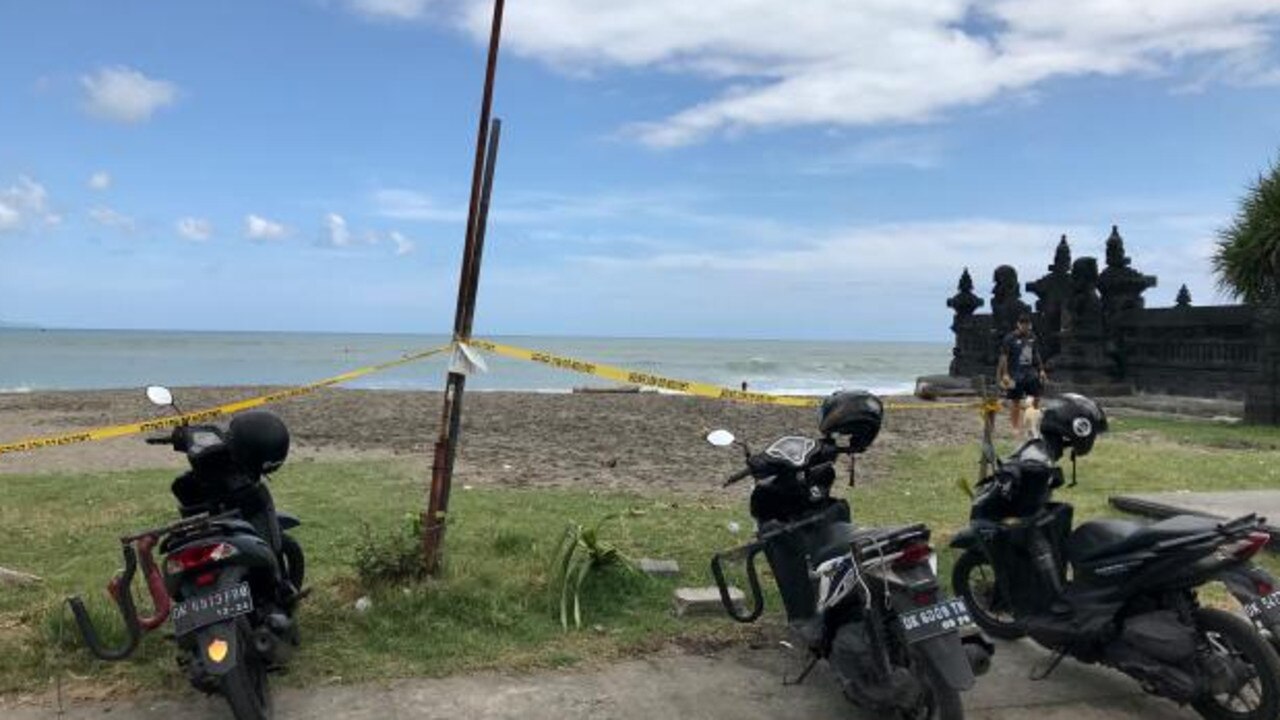
I’d like to set eyes on Kuta without the hordes of Aussie tourists, but I can only take Angga’s word for it. Bali’s current lockdown (which has been extended from July 20, 2021 to the end of the month and possibly longer) has restricted travelling around the island. Roadblocks with checkpoints have popped up on major roads leading in and out of Denpasar and between regions. Carrying a vaccine certificate, passport and evidence of a recent PCR test is a good idea.
Street scene
If my Canggu neighbourhood is anything to go by, it’s a similar scene everywhere. This popular tourist destination, known for its surf breaks and vibey hipster appeal, is a quiet version of its former self – tranquil and deserted in equal measure.
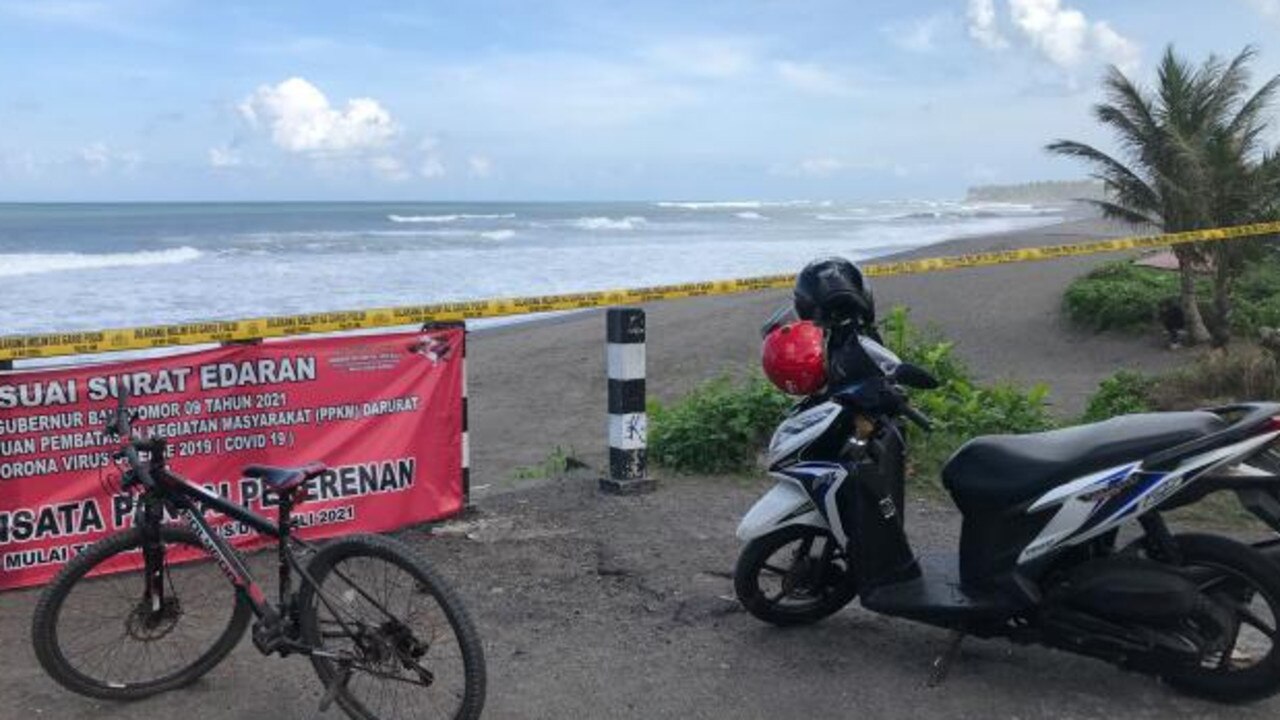
Essential services are permitted to open, but tourism, hospitality and retail have taken a hit. Surf shops and fashion boutiques have pulled the shutters down giving the streets the listless look of an out-of-season holiday town. Cafes and restaurants remain open but unfurled umbrellas, stacked chairs and bored staff staring into their phones are a reminder that it’s takeaway service only. Motorbikes buzz around, but it’s not the same volume of traffic that it was pre-Covid (an upside that’s proving ideal for novice motorbike riders like myself).
Stay off the sand
Perhaps, the most notable sign that Bali is closed for business is the ban on visiting beaches. In Sanur, where I quarantined on arrival, there’s a marked difference. The popular pedestrian footpath extending along the beachfront is usually alive with tinny music, restaurants patrons planting their feet in the sand, and tourists lazing around resort swimming pools. Now, the sagging beach hammocks, unkept bamboo recliners and circling stray dogs give the place the ghostly vibe of a deserted 1970s theme park. Only the coconut and water sellers continue their trade.
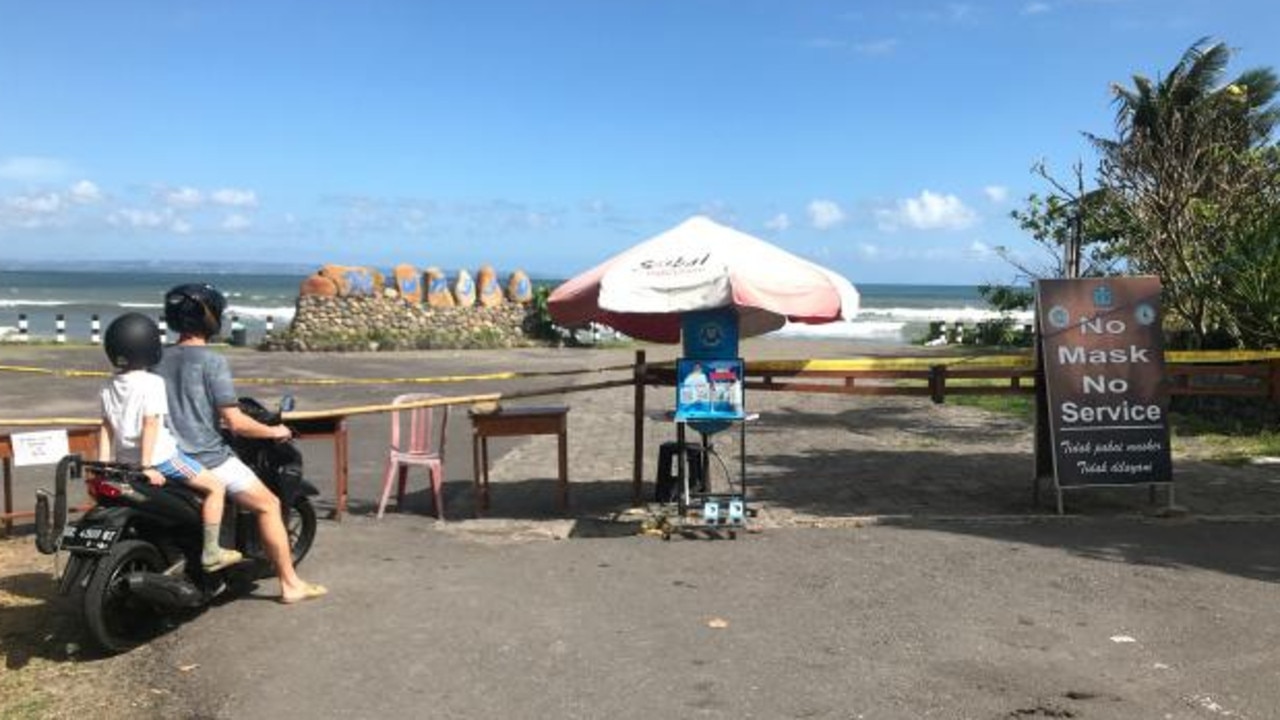
Here in Canggu and neighbouring Perenenan, every beach access road has the same familiar welcome – officious no-entry signs, yellow security tape strung haphazardly between plastic chairs and umbrellas, a makeshift hand sanitiser station.
Some surfers brave going against government regulations to catch a wave. Others, on scooters with tellingly empty surf board brackets, pull up to look wistfully at the stretches of empty sand.
Flaunting the rules
Perhaps it’s the laid-back lifestyle here, but there’s more flaunting of the rules than I ever witnessed in a Melbourne lockdown. Some cafes, touting ‘takeaway only’ street signs, usher diners into back courtyards for secret table service. Staff in these places often go mask-free. I sidestep anywhere that doesn’t practise social distancing and, at very least, offer hand sanitiser.
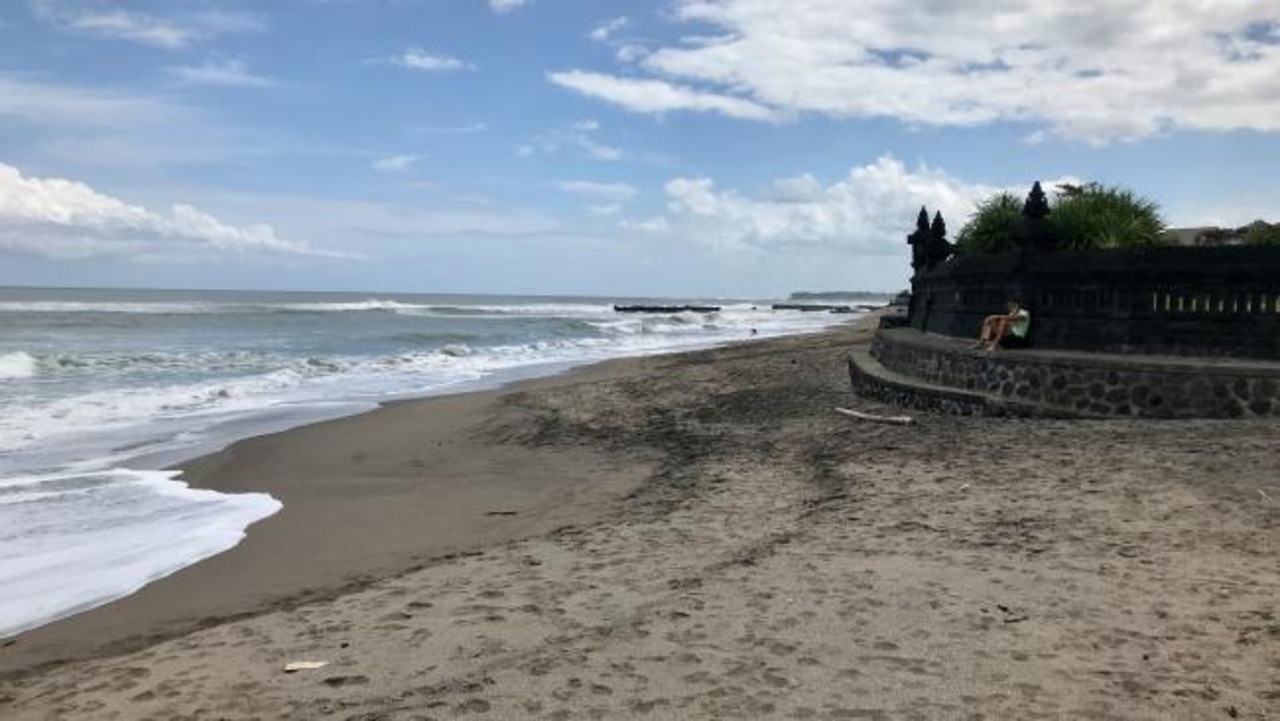
Great outdoors
Better to stick to the great outdoors. In the blue skies above, dozens of gigantic Balinese kites catch the seasonal offshore breezes common between June and August. You could stare at them all day.
Not far from my house, the paths and trails are busy with walkers, cyclists and motorbike riders enjoying the temperate climes and the scenery – tiered rice paddies, temples offering a whiff of sandalwood incense on passing, palm trees heavy with big yellow coconuts.
Bali might be closed for business, but it remains a little paradise on Earth.


